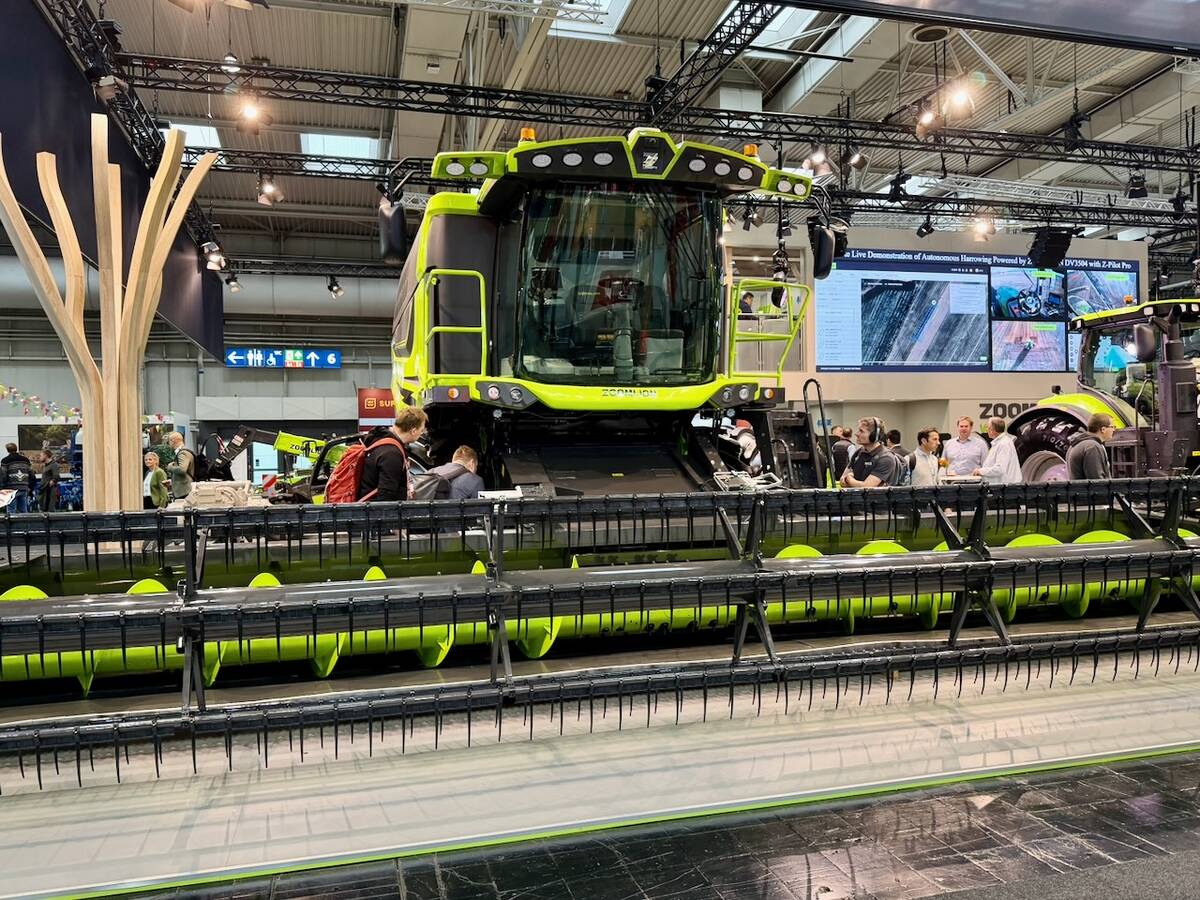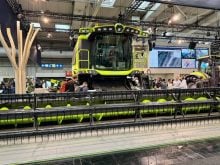In the waterlogged areas of the Prairies this fall, cattle came in from summer pasture 50 to 80 pounds lighter than usual.
They returned to home farms and ranches that may be short of winter forage because fields were too wet to navigate. Any feed put up this year is of poorer quality due to excessive rain, cold and weather that prevented optimum harvest timing. Hay swaths and bales sat in fields, steadily deteriorating, while producers waited for drier conditions in which to bale or gather bales.
Read Also

Agritechnica Day 3: Hybrid drive for a combine, data standards keep up to tech change and tractors of the year
Agritechnica 2025 Day 3: Hybrid drive for a combine, data standards keep up to tech change and tractors of the year.
Shortages and quality will require some producers to buy feed this year, incurring additional expense. The other option is to reduce herd size, further shrinking the domestic beef herd and delaying opportunities for future profit.
To ensure livestock health, producers may have the additional expense of feed testing and supplementation this fall and winter.
Backgrounding, private and commercial feedlots contended with unusual amounts of mud this spring and summer, which caused cattle health problems, lower weight gain, feeding equipment challenges, discounts due to hide tag and marketing delays from poor road conditions.
These are among the reasons federal and provincial governments must consider financial assistance to affected livestock producers.
The other major reason is fairness. Grain, oilseed and pulse crop producers affected by excess moisture this year were provided with a $30 per unseeded acre payment through the AgriRecovery program.
The excess moisture program (EMP) provided assistance to crop farmers. It is obviously unfair to exclude livestock producers from a similar assistance program.
Let’s not forget that livestock producers do not have the benefit of crop insurance, which will greatly assist grain and oilseed farmers this year.
The EMP did include compensation for forages that were seeded in 2009-10 and did not establish due to flooding, but this applies to relatively few acres and producers.
Nor is it sufficient to suggest cattle producers will receive assistance through federal programs tied to returns based on a five year average. Given recent tough times in the industry, the averages are so low that they are unlikely to trigger amounts sufficient to be of help.
After hearing pleas from cattle and farm groups for assistance, among them Wild Rose Agricultural Producers, Agricultural Producers Association of Saskatchewan, Keystone Agricultural Producers, Saskatchewan Association of Rural Municipalities and the Manitoba Cattle Producers Association, governments have taken a wait-and-see approach.
Now it’s November. The first snow has fallen. The time for waiting is surely over. An assessment of the situation can be made and an assistance program can be put into action.
After years of adversity that began in 2003, cattle producers are now seeing the possibility of brighter days ahead. Beef production is the lowest it has been in years but meat consumption in developing countries is poised to increase.
That bodes well for Canadian beef trade, as producers here use their advantages of good livestock genetics, adequate land, attention to livestock health, traceability and a proven record of food safety.
The Canadian herd is at its smallest since the mid-1990s. The industry is poised for expansion. But producers can’t take advantage of coming opportunities if they can’t get past a bad year characterized by cold, rain, pasture damage and feed shortages.
Money spent by governments now, to help livestock producers through this difficult time, may well pay off later in terms of a healthier and more productive cattle industry.
Bruce Dyck, Terry Fries, Barb Glen and D’Arce McMillan collaborate in the writing of Western Producer editorials.














